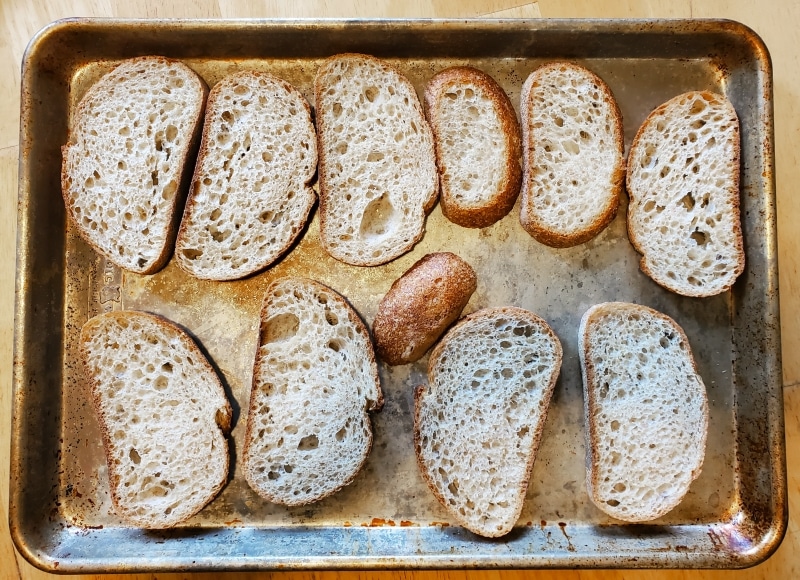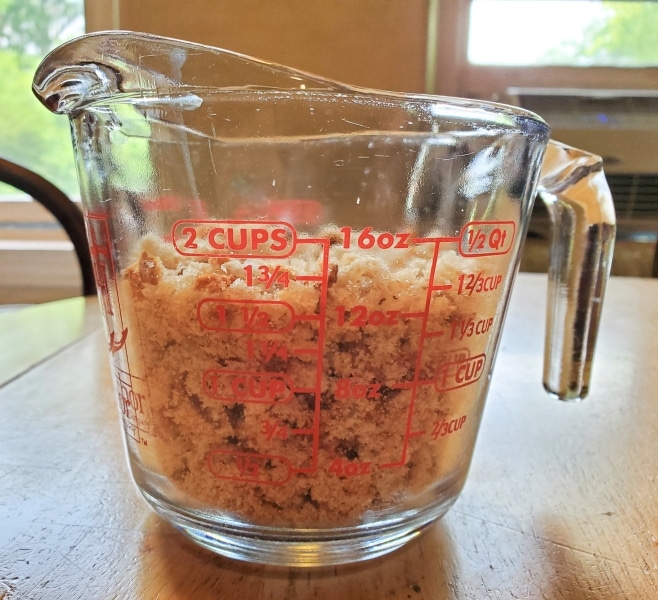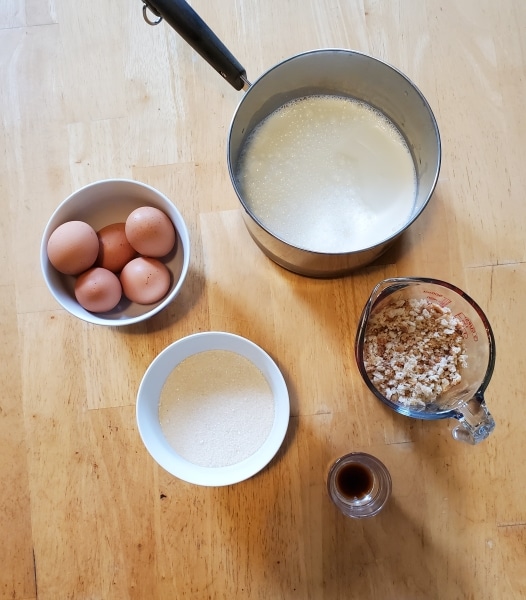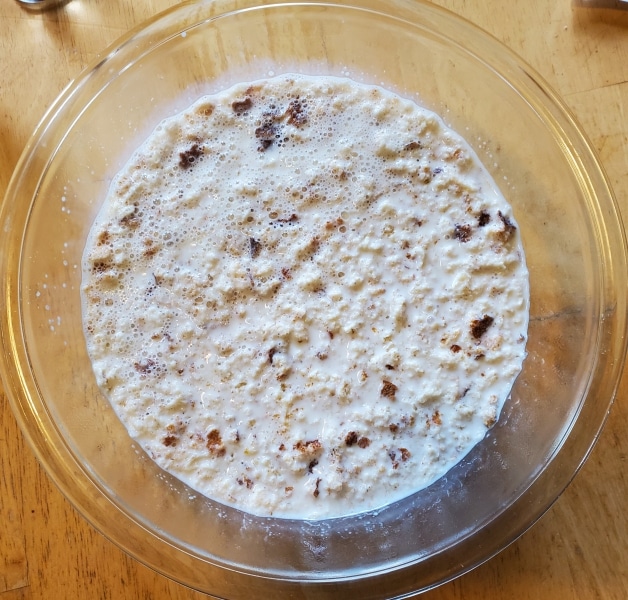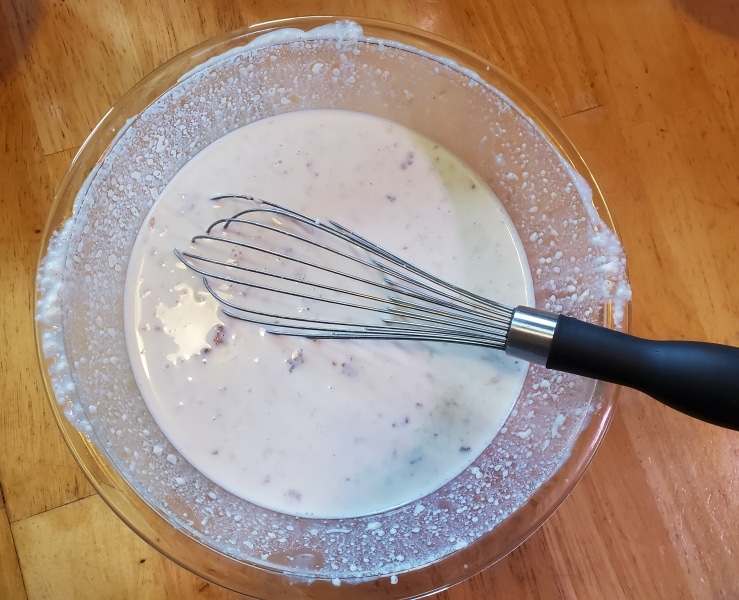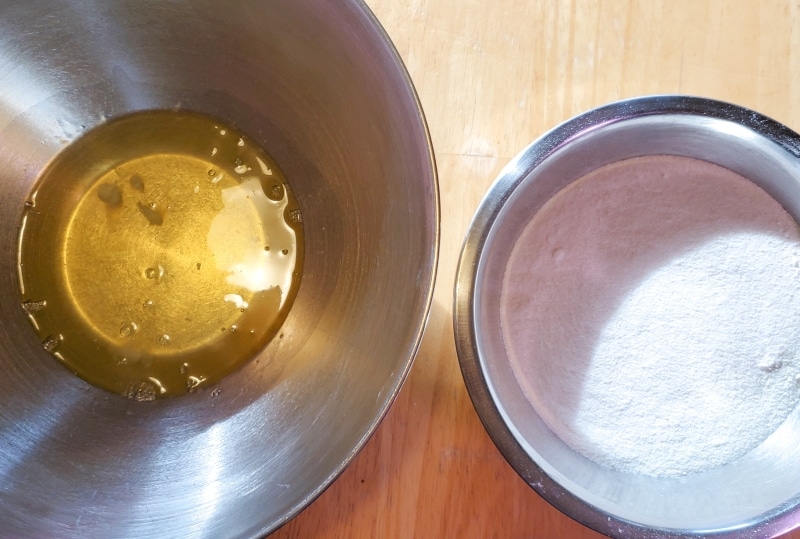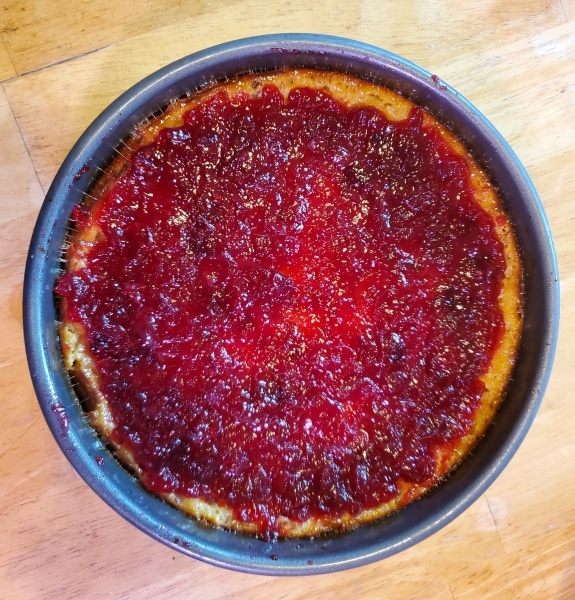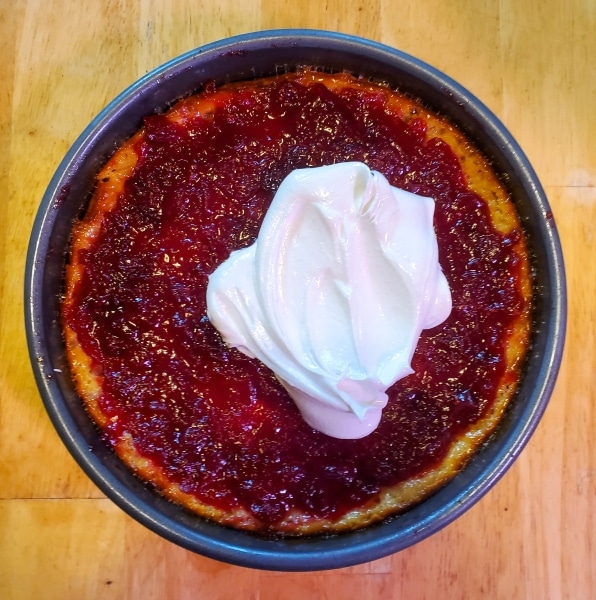Centennial Pudding
Katie Maxwell, Visitor Services and Design Coordinator
While researching the food served and advertised at the 1876 Centennial Exposition, I found a recipe for Centennial Pudding on page 212 of The National Cookery Book published in 1876 by the Women’s Centennial Executive Committee.
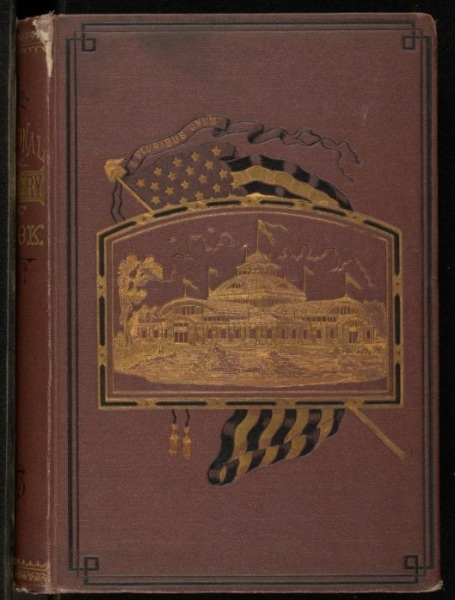
It appears to be a bread pudding with a layer of jelly (some homemade cranberry preserves will be playing the part of the jelly) and icing.
The recipe:
Pour a quart of boiling milk over a short pint of grated bread crumbs, and let it stand for an hour. Then beat it till it is smooth, and add sugar enough to make it quite sweet. Beat the yolks of five eggs, and stir into it, flavoring the whole with extract of vanilla. Bake it in a round baking dish in a quick oven, but not hot enough to brown it. Set it away, and when cool, spread over the top some jelly or jam. Have the whites of the eggs beaten, with sugar, as for icing, and spread it thickly on the top of the jelly. Set it in the oven to harden. This may be eaten with or without cream, as a sauce. Serve Cold.
First I need bread crumbs, and I don’t think the seasoned Italian breadcrumbs I have in my cupboard are going to cut it, so I’ll just have to make my own.
I’ve dried out some slices of bakery bread in the oven. A few blitzes in the blender later, and I have coarse breadcrumbs. (Attempting to “grate” the bread with a box grater proved unsuccessful)
Here are all of the ingredients I need for the bottom pudding layer:
Qt of milk
Short pint of grated breadcrumbs*
Yolks of five eggs
Sugar
Extract of vanilla
* I interpreted a “short pint” as just under two cups.
Pour a quart of boiling milk over a short pint of grated bread crumbs, and let it stand for an hour.
Then beat it till it is smooth,
It’s hard to tell in this picture, but the mixture has thickened. However, no matter how much I whisk, it will not become smooth.
and add sugar enough to make it quite sweet.
The recipe does not state how much sugar to use so I’ve been adding sugar gradually until it tastes “quite sweet.” I used just under a cup of sugar.
Beat the yolks of five eggs, and stir into it, flavoring the whole with extract of vanilla.
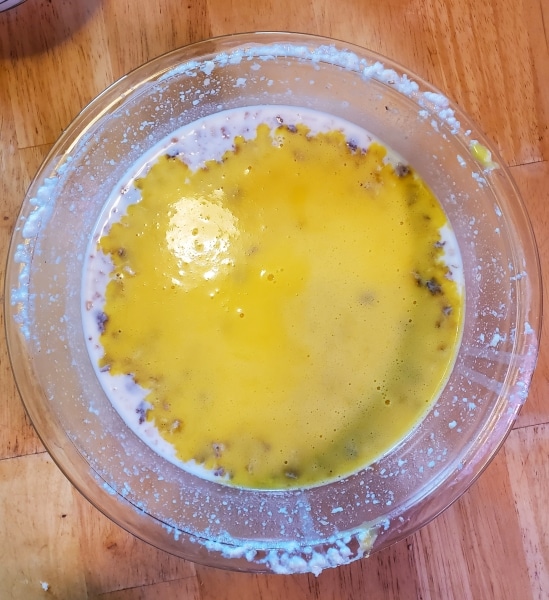
I used a teaspoon of vanilla extract. The whites of the five eggs will join the party later on.
Bake it in a round baking dish in a quick oven, but not hot enough to brown it.
Here is how it looks before baking:

The mixture still seems fairly liquidy, but the egg yolks should hopefully take care of that. I haven’t found a consensus on the internet on what temperature a “quick” oven should be, so I’m hedging my bets on 375°F. It’s hotter than most cake-baking recipes but lower than usual roasting temperatures. Hopefully this temperature will bake the pudding without browning the top.
After about an hour and ten minutes, I think it’s done!

Set it away, and when cool, spread over the top some jelly or jam.
While I wait for the pudding to cool, I can
Have the whites of the eggs beaten, with sugar, as for icing,
Of course, now I need to learn how to make the 19th-century version of icing. Fortunately there is a recipe for “Icing for Cake” on page 271.
To the white of one egg allow a quarter pound of powdered sugar ; […]
“Powdered sugar” in 18th- and 19th-century recipes equates to modern-day superfine or caster sugar. This looks like a lot of sugar.
Break the whites of the eggs on a cold china meat dish,
Fortunately, today we can just use refrigerated eggs.
and add a handful of sugar at once, and keep on beating and adding the sugar until you have poured all in.
c
An interesting thing I noticed is that the egg whites are acquiring a creamy, ribbony texture rather than the fluffy texture I expected. Meringue (think lemon meringue pie) also uses egg whites, but calls for a lot less sugar, so I’m betting that the large amount of sugar is causing this texture change.
This icing will require to be beaten for about half an hour.
Not if you have an electric beater.
When perfectly thick and smooth, put a layer of it over the cakes, and set them in a cool oven ; let them stay until the icing is dry, and then add another coat, or they may be dried in the sun. You may flavor your icing with lemon or vanilla.
I used a teaspoon of vanilla for flavoring.
A short time later, and my pudding is cool enough to
spread over the top some jelly or jam.
Now that the icing layer is ready, I can
[…] spread it thickly on the top of the jelly.
After smoothing the icing all over the dish, I
Set it in the oven to harden.
I’m pretty sure a “cool” oven should be set for the lowest possible temperature, in my oven’s case, 200°F.
After about 90 minutes, I give the icing layer a gentle tap with the flat of a butter knife, and it seems hardened and ready to leave the oven.
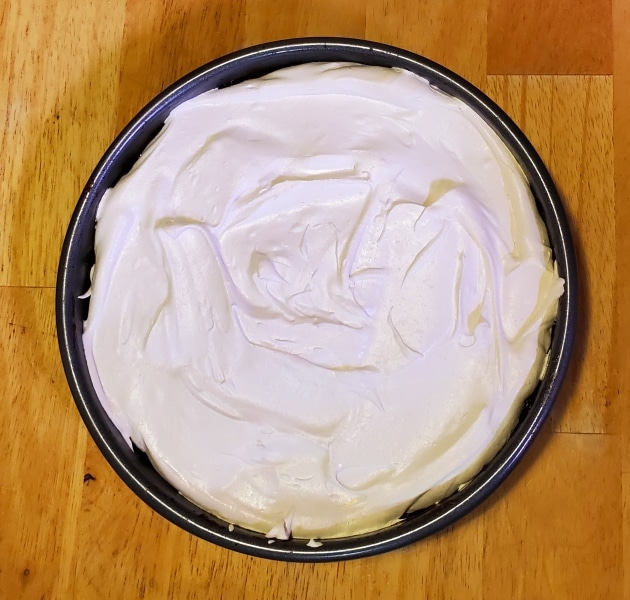
The icing is glossy but not browned. Although I want to eat my dessert now, the recipe specifically states to
Serve Cold.
After a few hours in the fridge, the Centennial pudding is finally ready to eat.

It’s pretty good! The icing reminds me of marshmallows, although it’s a bit on the sweet side for me. I definitely recommend trying out this recipe at home. Although time consuming, it isn’t difficult. Feel free to reduce the amount of sugar in the icing layer.

